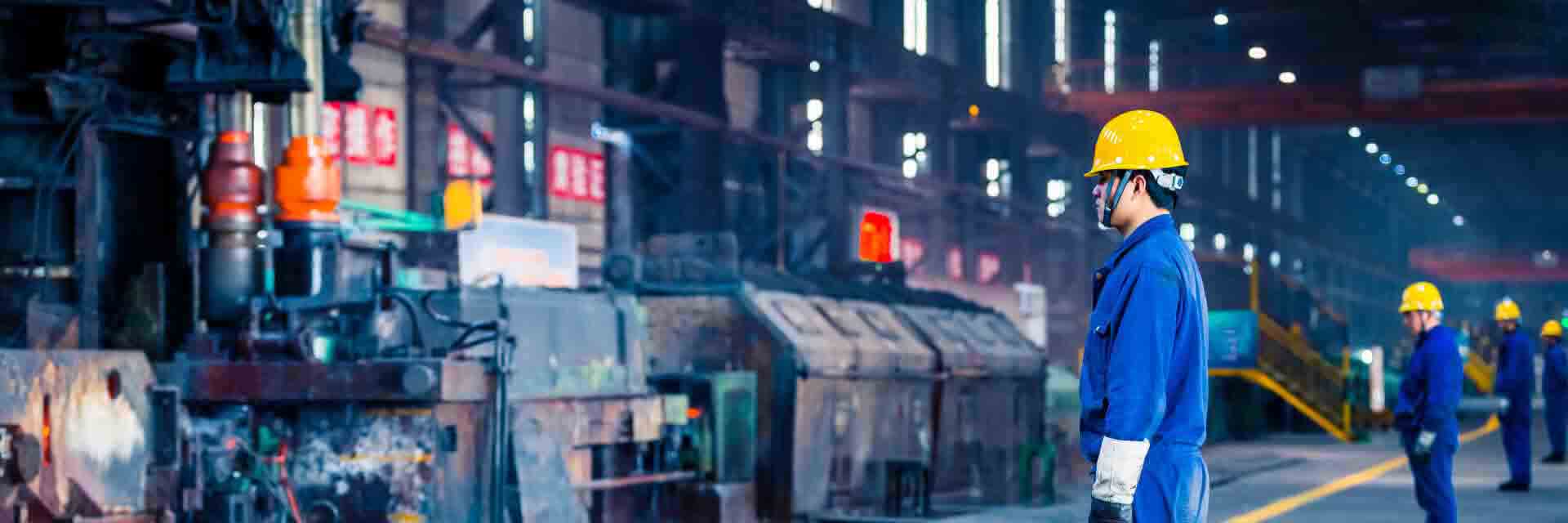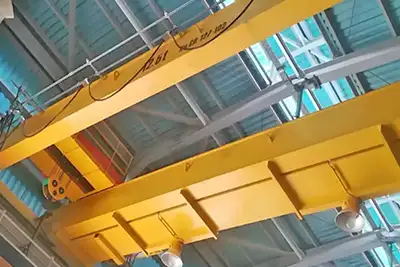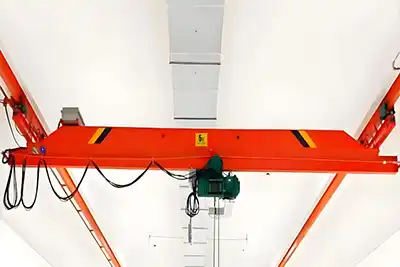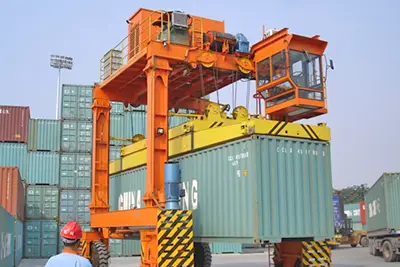Overhead Cranes Explosion-Proof Ratings: ExdIIBT4 vs. ExdIICT4
Comparing explosion-proof crane ratings for safe use in hazardous gas environments with different gas groups & temperature classes.Get right exproof crane!
What Are Explosion-Proof Overhead Cranes?
Explosion-proof overhead cranes are specially designed cranes used in places where flammable gases, vapors, or dust might be present. These cranes have extra safety features to prevent sparks or heat from causing explosions. They are built with sealed enclosures and components that stop any internal sparks from escaping and igniting the surrounding air.
In hazardous environments like chemical plants, oil refineries, or gas processing facilities, even a small spark can cause a serious explosion. That’s why explosion-proof ratings are critical. They tell you exactly how safe a crane is for use around specific types of dangerous gases or dust. Without these ratings, you risk equipment failure, accidents, and even loss of life.
These ratings also help manufacturers and buyers understand the limits of the crane’s safety features. Knowing the right rating ensures you don’t use a crane in a zone where it might not handle the risk properly.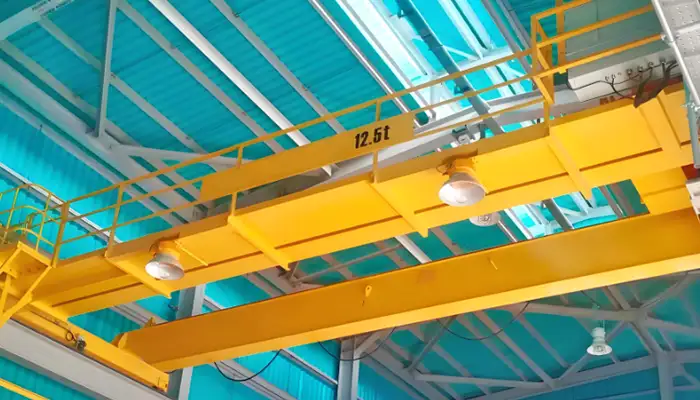
European style overhead crane with explosion proof features
Why Compare ExdIIBT4 and ExdIICT4?
You’ll often see cranes marked with codes like ExdIIBT4 or ExdIICT4. These codes seem similar but have important differences. Both are explosion-proof ratings, but they apply to different kinds of hazardous areas.
- ExdIIBT4 is for certain gases and temperature conditions.
- ExdIICT4 covers a slightly more dangerous group of gases and the same temperature class.
Choosing the right rating is key. Using the wrong crane in a hazardous zone can lead to accidents or costly downtime. This comparison helps buyers, engineers, and safety officers pick the right crane for their specific work environment.
Explosion-Proof Ratings
What Does “Explosion-Proof” Mean in Overhead Cranes?
When we say a crane is “explosion-proof,” it means the crane is designed to work safely in areas where explosive gases or dust might be present. The crane’s electrical parts and motors are built to prevent sparks, flames, or heat from escaping and causing an explosion.
This doesn’t mean the crane itself can’t catch fire, but it’s made so the risk of igniting the surrounding hazardous atmosphere is extremely low. It’s all about containing any ignition sources inside a strong, sealed enclosure.
How Explosion-Proof Markings Work (Ex Marking)
You might have seen codes like ExdIIBT4 or ExdIICT4 stamped on cranes or equipment. These markings tell you exactly what kind of explosion protection the crane has and where it can be safely used.
Here’s a quick breakdown of the marking parts:
- Ex: Stands for explosion protection.
- d: Indicates a “flameproof” enclosure — the most common type used in cranes. It means any spark inside won’t escape to ignite the outside air.
- II: Means the equipment is for non-mining areas (Group II).
- B or C: The gas group classification. B and C show different levels of explosiveness for gases the crane can handle safely.
- T4: Temperature class. It shows the max surface temperature the crane parts can reach, which must be below the ignition temperature of gases in the area.
Standards That Define Explosion-Proof Ratings
Several international standards define how these ratings are tested and applied. The most important ones for overhead cranes are:
- IECEx: International Electrotechnical Commission System for Certification to Standards Relating to Equipment for Use in Explosive Atmospheres. It’s widely accepted worldwide.
- ATEX: The European Union’s directive for equipment in explosive atmospheres. Very strict and detailed.
- NEC (National Electrical Code): Mostly used in the USA. It defines hazardous locations and safety requirements for electrical equipment.
These standards make sure explosion-proof cranes meet strict safety criteria before they can be used in hazardous zones. They cover how equipment is designed, tested, and installed.
Breakdown of Ratings: ExdIIBT4 and ExdIICT4
Understanding the Code Components
Explosion-proof ratings like ExdIIBT4 and ExdIICT4 might look complicated at first. But once you break down each part, it becomes much easier to understand what they mean and why they matter.
Exd: Flameproof Enclosure Type
- Ex means the equipment is explosion-proof.
- d stands for "flameproof enclosure."
- This means the crane’s parts are sealed in a strong, heat-resistant casing. If an internal spark or explosion happens, the flameproof enclosure stops the flame or hot gases from escaping and igniting the outside air.
- Flameproof is one of the safest protection methods used in overhead cranes working in hazardous zones.
Equipment Group (Non-Mining)
- The II indicates the equipment is meant for non-mining environments.
- Mining equipment uses Group I, but cranes in factories, refineries, and chemical plants fall under Group II.
- This classification helps define the kind of hazardous atmosphere the equipment can handle.
B / C: Gas Group Classification
- The letter B or C shows the gas group the crane is designed for.
- These groups classify gases based on how easily they can ignite.
- Group IIB: Includes gases like ethylene and some similar flammable gases. These are moderately explosive.
- Group IIC: Includes hydrogen, acetylene, and other highly explosive gases. These are more dangerous than IIB gases.
- Simply put, IIC is more severe and demanding than IIB.
- Choosing the right gas group ensures the crane can safely operate without risk of explosion.
T4: Temperature Class and Its Importance
- T4 means the crane’s surface temperature will not exceed 135°C (275°F).
- This is important because some gases ignite if they touch a hot surface above their ignition temperature.
- A T4 rating guarantees the crane won’t get hot enough to ignite the surrounding gases.
- It’s a key factor when selecting cranes for areas with flammable atmospheres.
This breakdown helps you see exactly what the rating means. Knowing this is essential to pick the right crane for your hazardous area, keeping everyone safe and your operation running smoothly.
Comparison of ExdIIBT4 vs. ExdIICT4\
| Aspect | ExdIIBT4 | ExdIICT4 |
|---|---|---|
| Gas Group Classification | Group IIB - Moderate explosiveness | Group IIC - Highest explosiveness |
| Common Gases | Ethylene, Cyclopropane, low-concentration hydrogen | Hydrogen, Acetylene, Carbon disulfide |
| Temperature Class | T4 (max surface temp 135°C / 275°F) | T4 (max surface temp 135°C / 275°F) |
| Suitable Environments | Chemical plants, oil refineries, pharmaceutical, food processing | Hydrogen plants, acetylene storage, petrochemical plants |
| Safety Considerations | Safe for moderately explosive gases | Required for highly explosive gases |
| Cost | Generally lower cost than IIC-rated cranes | Typically more expensive due to stricter requirements |
| Usage Advice | Use in IIB classified zones only | Can be used safely in both IIC and IIB zones |
Would you like me to help create more tables or continue with another section?
Gas Group Classification
Group IIB Characteristics and Common Gases
- Medium level of explosiveness.
- Typical gases include:Ethylene, Cyclopropane,Some hydrogen mixtures (in low concentrations)
- Less reactive compared to Group IIC.
- Equipment rated for IIB is suitable for many chemical plants and refineries where these gases are present.
Group IIC Characteristics and Common Gases (More Severe)
- Highest risk group for gases.
- Includes very explosive gases such as: Hydrogen,Acetylene,Carbon disulfide, etc.
- Equipment for IIC must be built to stricter standards because the gases ignite more easily and burn faster.
- Used in industries where these highly volatile gases are common.
Temperature Class T4
- Both ratings share T4, which means the equipment’s surface temperature will not exceed 135°C (275°F).
- This is critical because many gases ignite at or above this temperature.
- Ensuring the crane doesn’t exceed this temperature prevents accidental ignition of gases.
- T4 is a common temperature class suitable for many hazardous zones but not for the most sensitive temperature classes like T1 or T2.
Implications for Overhead Cranes
Which Cranes Are Suitable for IIB vs. IIC Areas?
- Cranes with ExdIIBT4 rating are suitable for environments where moderately explosive gases exist.
- Cranes with ExdIICT4 rating are needed in places with highly explosive gases.
- Using an IIB-rated crane in an IIC area is unsafe and may cause accidents.
- IIC-rated cranes can also be used safely in IIB areas, but they are generally more expensive.
Safety Margins and Risk Considerations
- Always choose the rating that matches or exceeds the highest risk in your environment.
- Consider future changes in the environment or process that might increase gas hazards.
- Safety is the top priority — investing in a higher rating crane can prevent costly accidents.
Typical Application Areas for Each Rating
ExdIIBT4 Cranes Are Common In:
- Chemical manufacturing plants handling ethylene or propane.
- Oil refineries with moderate gas hazards.
- Pharmaceutical industries with some flammable solvents.
- Food processing plants where flammable gases or vapors might be present.
ExdIICT4 Cranes Are Common In:
- Hydrogen production and storage facilities.
- Acetylene welding gas storage areas.
- Petrochemical plants processing highly explosive gases.
- Industrial sites with a higher risk of gas leaks involving severe gases.
This comparison helps you decide which explosion-proof crane rating fits your hazardous environment best. Always check the gas group classification for your site first, then match it with the crane’s rating for safe and reliable operation.
Key Factors for Choosing Between ExdIIBT4 and ExdIICT4 for Overhead Cranes
| Key Factor | Considerations |
|---|---|
| Nature of Hazardous Atmosphere | - Identify gas type and concentration- Use ExdIICT4 for highly explosive gases (hydrogen, acetylene)- Use ExdIIBT4 for moderately explosive gases (ethylene, propane)- Check safety data sheets and regulations |
| Operational Temperature and Ambient Conditions | - Ensure crane surface temperature stays below gas ignition point- Both ratings are T4 (max 135°C)- Consider extreme heat, humidity, or environmental factors- May need additional cooling or insulation |
| Regulatory and Client Requirements | - Comply with local and international standards (IECEx, ATEX, NEC)- Follow client or insurance requirements- Some clients require higher safety ratings regardless of gas type |
| Cost vs. Safety Trade-Offs | - ExdIICT4 cranes usually cost more due to stricter specs- Using a lower rating crane than needed risks accidents and fines- Balance budget with safety needs- Prioritize safety for long-term savings |
Nature of the Hazardous Atmosphere
The most important thing to know is what kind of gas or vapor is in your work area. Different gases catch fire at different temperatures and concentrations.
- First, identify the main gases present and how much of each there is.
- If you have gases like hydrogen or acetylene, you’ll need an ExdIICT4 crane—these gases are very explosive.
- For gases like ethylene or propane, an ExdIIBT4 crane usually works fine.
- Always double-check safety data sheets and local rules to be sure you’re choosing the right rating.
Operational Temperature and Ambient Conditions
Your crane’s surface temperature must always stay below the ignition point of the gases nearby.
- Both ExdIIBT4 and ExdIICT4 cranes have a temperature class of T4, which means the surface won’t get hotter than 135°C.
- But things like very hot weather or high humidity can affect how the crane performs.
- If your environment gets really hot or involves heat-producing processes, you might need extra cooling or insulation to keep things safe.
Regulatory and Client Requirements
Different places and industries have their own rules about explosion-proof cranes.
- Some clients want the highest safety rating no matter what type of gas is around.
- Make sure you check standards like IECEx, ATEX, or NEC depending on where you are.
- Insurance policies or certifications might also require certain explosion-proof levels, so factor that in when choosing.
Cost vs. Safety Trade-Offs
Cranes with an ExdIICT4 rating usually cost more because they have stricter design and materials.
- But using a crane with a lower rating than what’s needed can cause serious accidents, fines, or even production stops.
- It’s important to balance your budget with safety — but never cut corners on safety.
- Investing in the right crane now can save you money and headaches later by avoiding downtime and risks.
Summary and Recommendations
What You Need to Know
The core differences helps you make the right choice:
- ExdIIBT4 cranes: Designed for gases with moderate explosion risk, like ethylene and propane.
- ExdIICT4 cranes: Built for highly explosive gases such as hydrogen and acetylene.
- Temperature class: Both keep surface temperatures below 135°C (T4 rating) to prevent ignition.
- Key decision factors: Gas type, concentration, and environmental conditions determine the right rating.
- Compliance standards: Follow local and international rules like IECEx, ATEX, and NEC.
Tips for Buyers and Engineers
Practical steps to ensure you select the safest and most suitable crane:
- Identify hazards: Know exactly which gases are present and in what quantities.
- Check regulations: Verify local safety laws and client requirements early on.
- Match rating to risk: Always choose a crane rated for your site’s hazard level or higher.
- Consider environment: Take into account factors like temperature and humidity that affect crane safety.
- Seek expertise: Don’t hesitate to ask manufacturers or experts if you need help deciding.
Final Reminders
Key points to keep in mind for safety and compliance:
- Prioritize safety: The correct explosion-proof crane prevents accidents and costly downtime.
- Ensure certification: Certified equipment helps avoid fines and legal problems.
- Invest wisely: Choosing the right rating is a smart long-term business decision.
- Ask for advice: When unsure, always consult professionals to get the best solution.

